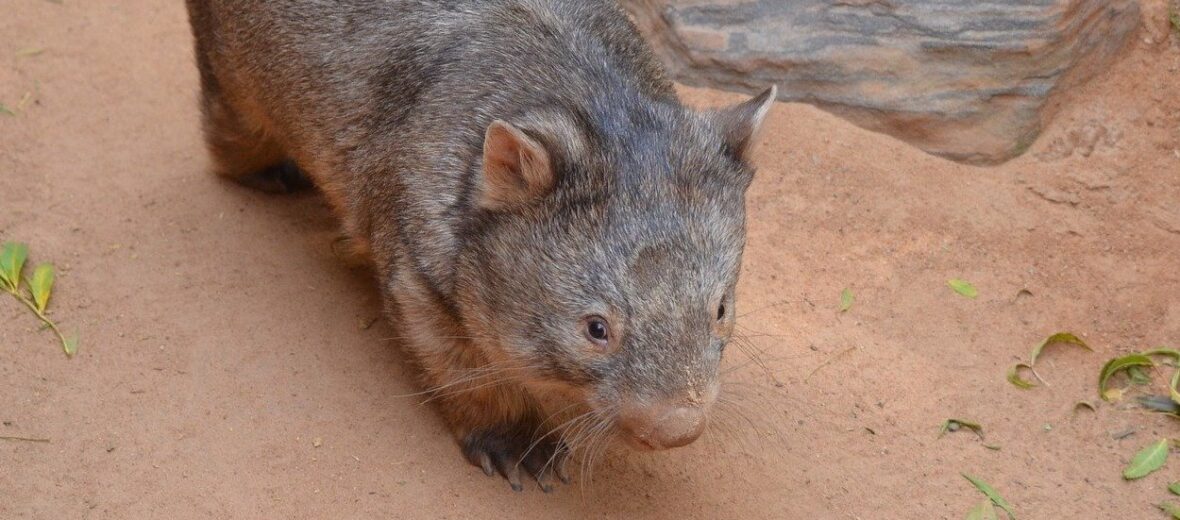
That’s right… the poop of a wombat is cube shaped. An interesting and odd fact that now can’t be stricken from your brain. You’re welcome. Wombats are short-legged, muscular marsupials native to Australia. There are 3 species of wombat: The northern hairy-nosed, the southern hairy-nosed (distinguished by their hairy noses, softer fur, and larger ears), and the common which is the most numerous & widespread and has a bare nose.
First the Stats…
Scientific name: Vombatidae
Weight: Up to 77 lbs.
Length: Up to 3.3 feet
Lifespan: Up to 20+ years
Now on to the Facts!
1.) Even though the wombat appears slow and chubby, they can run up to 25 mph for up to a minute and a half!
2.) It takes, on average, about 2 weeks for a wombat to digest a meal!
3.) Their diet consists of roots, grass, scrubs, and bark. In order to break down all that roughage, they have special enzymes in their stomachs that help them process the tough meals.
4.) They can defend themselves via bite, claw attack, or simply running you over. They can also use their strong backs to crush the skulls of intruders against the roofs of their burrows.
5.) Like other burrowing marsupials (rears their young in an abdominal pouch or marsupium), their pouch faces backwards; this way they don’t get dirt in their pouch as they dig tunnels.
But wait, there’s more on the wombat!
6.) During the ice age, the diprotodon (the relative of wombats) lived in Australia 2.5 million years ago, and it has been estimated to have weighed around 3 tons and stretch 14 feet from tail to nose!
7.) A group of wombats is called a colony, mob, or wisdom.
Did you know…?
They produce 80 – 100 droppings each night, and using special bones in their backsides they squeeze their poop into a neat, cube shape. This helps keep the poop from rolling away, as they use their poop to mark their territory.
8.) Wombat burrows can be up to 250 feet long!
9.) Wombats are meant for digging. They have stout bodies and long sharp claws that they use to dig complex tunnels. They can dig up to 3 feet a day.
10.) These critters are typically solitary. Males tend to avoid each other while females though tend to get along fine with other females.
11.) Another fun fact is that, like the platypus, wombats have biofluorescent fur.
Now a Short Wombat Video!
Also, check out the Critter Science YouTube channel. Videos added frequently!
Want to suggest a critter for me to write about? Let me know here.



